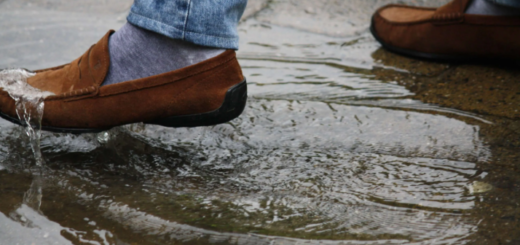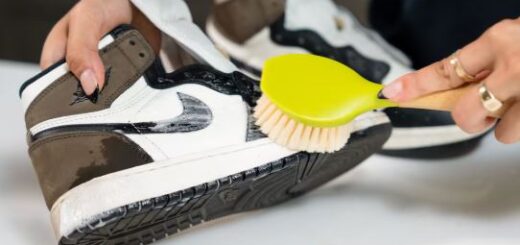The Leather Shoe Lifesaver: Prevent and Remove Mould Like a Pro
Understanding Mould Growth on Leather Footwear
Leather, being a natural and porous material, is vulnerable to various environmental influences. One of the most frustrating issues leather shoe owners face is the development of mould. Though it often strikes in regions with high humidity or during specific times of the year, mould can appear anywhere if the conditions are right. Moisture, lack of airflow, and organic materials on the shoe’s surface create the perfect environment for fungal growth.
While leather is treated during the tanning process to improve its resistance to mould, the addition of oils, waxes, and even everyday contaminants like dirt or sweat can introduce nutrients that feed fungal spores. These microscopic spores are ever-present in the environment. Once they land on a suitable surface—like damp leather—they multiply quickly, leading to visible mould patches that can damage the material and create an unpleasant odor.

Environmental Triggers Behind Leather Shoe Mould
Mould doesn’t just appear overnight without cause. It results from a combination of environmental conditions that create a breeding ground for fungal growth. The most significant contributors include:
- High moisture levels: Wet shoes stored before fully drying are a leading cause of mould. Whether soaked by rain or sweat, leather must dry completely before storage.
- Limited air movement: Shoes left in sealed containers or closets without proper ventilation often trap humidity, allowing mould to develop.
- Darkness: Mould prefers shaded areas. Shoes tucked away in dark corners or boxes for long periods are particularly susceptible.
- Organic material: Residues from oils, dirt, or even skin contact leave behind trace nutrients that mould spores thrive on.
Even leather that’s been waterproofed or conditioned can succumb to mould under the right conditions.
Strategies to Prevent Mould Formation
Taking proactive steps can significantly reduce the risk of mould forming on your leather shoes. Prevention begins the moment you take your shoes off, especially after exposure to moisture.
Dry Shoes Properly After Use
If your shoes have been exposed to water or damp conditions, drying them correctly is essential. Avoid placing them near direct heat sources such as heaters or radiators, as excessive heat can cause the leather to crack. Instead, let them air dry in a well-ventilated room. Lay them on their side or use a shoe rack that elevates them to allow airflow underneath.
You can insert balled-up newspaper into the shoes to help draw out moisture. Replace the paper as it becomes saturated. Only once they’re mostly dry should you insert cedar shoe trees to maintain shape and draw out the last bits of moisture. Avoid using plastic shoe trees for drying, as they don’t allow airflow and may trap humidity inside.

Choose the Right Storage Environment
Where and how you store your shoes can make or break their condition. Storing leather footwear in tightly closed closets or airtight containers can create the perfect microclimate for mould. Choose a storage area with good ventilation and moderate humidity. Consider leaving closet doors ajar or installing discreet ventilation holes to promote air circulation.
Avoid placing shoes directly on flat, non-breathable surfaces. Instead, opt for slatted shoe racks or breathable mats that allow airflow underneath the soles, particularly if your shoes have leather bottoms, which are more prone to retaining moisture and attracting mould.
Use Protective Additives
Including moisture-absorbing materials in your storage setup can make a significant difference. Cedar shoe trees are ideal for daily use, absorbing residual moisture while imparting a pleasant scent. For longer-term storage, silica gel packets or sachets of activated charcoal can help maintain a dry environment.
Cedar chips, often used in closets or trunks, can serve a dual purpose by deterring pests and controlling humidity. Reuse the silica packets that come in product packaging—they’re excellent for keeping shoe boxes dry if you must use them.
Avoid Long-Term Storage Without Preparation
If you’re planning to store shoes during off-seasons, it’s crucial to prep them correctly. Always clean the shoes thoroughly before storage to remove any residue that mould might feed on. Let them dry completely, insert cedar trees, and if using boxes, make sure they’re ventilated. Poke a few holes in the sides or lid to allow airflow.
Avoid storing shoes in damp places like basements or near exterior walls where moisture can accumulate. If necessary, consider using a dehumidifier in your storage area to maintain ideal conditions.
Reacting to Mould When It Appears
Despite your best efforts, mould may still make an appearance. When it does, swift and careful action can save your shoes from permanent damage. The first step is to act the moment you notice it.
Immediate Cleanup of Surface Mould
Start by taking the affected shoes outside. Mould spores can be airborne, and it’s best to avoid spreading them indoors. Using a clean, damp cloth soaked in warm water, gently wipe the surface to remove as much of the visible mould as possible. Avoid vigorous scrubbing as it can drive spores deeper into the leather.
Once the surface is clear, let the shoes air out in a shaded but breezy area. Avoid direct sunlight, which may cause fading or drying.
Deep Cleaning with Natural Solutions
To ensure the removal of mould from hidden areas such as seams, eyelets, and under flaps, a deeper cleaning is needed. White vinegar is an effective and affordable option. It has natural anti-fungal properties and is safe for leather when diluted correctly.
Mix one part white vinegar with four parts water. For a less pungent solution, you can blend in some lemon juice. Wearing gloves to protect your skin, dip a soft cloth or sponge into the mixture and wipe the entire shoe—inside and out. Pay special attention to stitching and tight spots. A soft-bristled brush can be used for hard-to-reach crevices.
Allow the shoes to dry thoroughly in a well-ventilated area. The vinegar smell will fade as the shoes dry. Once completely dry, check for any remaining mould. If necessary, repeat the cleaning process for stubborn spots.
Conditioning and Restoring the Leather
After cleaning, your shoes will need some restorative care. Vinegar can dry out leather, so rehydrating it is essential. Begin with a quality leather conditioner to restore suppleness. Apply one or two light layers, allowing each to absorb fully.
Follow up with a pigmented shoe cream if needed to revive color and finish. If you’re aiming for a high shine, a light coat of wax polish can be added. Your goal is to bring back the leather’s natural texture and appearance without clogging its pores.
When to Seek Professional Help
In cases where mould damage is extensive, or if the leather feels weak or brittle after cleaning, it’s worth consulting a professional cobbler or leather restoration expert. They have the tools and experience to handle deep damage and may be able to restore even heavily affected shoes to wearable condition.
Keep in mind that persistent mould growth after repeated cleaning may point to broader environmental issues, such as damp flooring, poorly ventilated storage, or even structural issues in your home. Addressing these concerns can save not only your shoes but other leather goods and furnishings as well.
Final Thoughts on Maintaining Mould-Free Leather Shoes
Keeping mould at bay is largely about understanding your environment and adjusting your shoe care accordingly. Pay attention to humidity levels, ensure proper airflow, and avoid sealing shoes in dark, damp spaces. Treat your leather shoes with the same care you would any natural material—they need to breathe, stay clean, and be kept dry.
By staying proactive and responsive, you can preserve the longevity and elegance of your leather footwear for years to come. Whether it’s your daily dress shoes or your finest boots, a little preventative care and timely maintenance go a long way in protecting your investment from the creeping threat of mould.
FAQs
What causes mould to grow on leather shoes?
Mould forms when leather is exposed to moisture, poor ventilation, and darkness. These conditions allow dormant mould spores to thrive on the organic substances present in leather.

Are leather shoes more prone to mould than other materials?
Yes, leather contains natural oils and tannins that attract mould spores, especially when shoes are damp or stored in humid environments.
Can wet shoes stored in closets lead to mould?
Absolutely. Storing damp leather shoes in closed, poorly ventilated spaces like closets encourages mould growth due to trapped moisture and stagnant air.
How can I prevent mould after my shoes get wet?
Dry them in a well-ventilated area at room temperature. Avoid direct heat. Use newspaper to absorb moisture initially, then insert wooden shoe trees once the shoes are slightly dry.
Should I use shoe trees in wet leather shoes?
Not immediately. Wait until the shoes have partially dried before inserting wooden shoe trees to help retain shape and aid in breathability.
What’s the best way to store leather shoes long-term?
Store them in breathable environments with air circulation. Avoid sealed boxes or damp basements. Use cedar shoe trees, silica gel packets, or cedar shavings to absorb moisture.
Can mouldy leather shoes be saved?
Yes, most mouldy leather shoes can be cleaned and restored with the right process, including surface cleaning, deep mould treatment, and conditioning the leather afterward.
What is the safest method to kill mould on leather?
Use a vinegar solution (around 12% concentration) or a leather-safe mould cleaner. Apply it outdoors using a cloth or sponge, covering the entire surface to ensure even treatment.
How do I condition leather shoes after cleaning mould?
Apply a leather conditioner or lotion to rehydrate the leather, followed by a shoe cream. This helps restore flexibility, color, and finish after vinegar treatment.
Is it safe to store shoes in their original boxes?
Only if the shoes are completely dry and the boxes are ventilated. Punch small holes in the box and avoid damp storage areas to reduce mould risk.
What are signs that mould is forming on leather shoes?
Early signs include a musty smell and fuzzy white or greenish spots. By the time mould is visible, it has already been growing for a while.
When should I consult a professional for mouldy shoes?
If the mould is extensive or the leather is severely damaged, it’s best to consult a cobbler or leather care specialist to avoid further harm.







